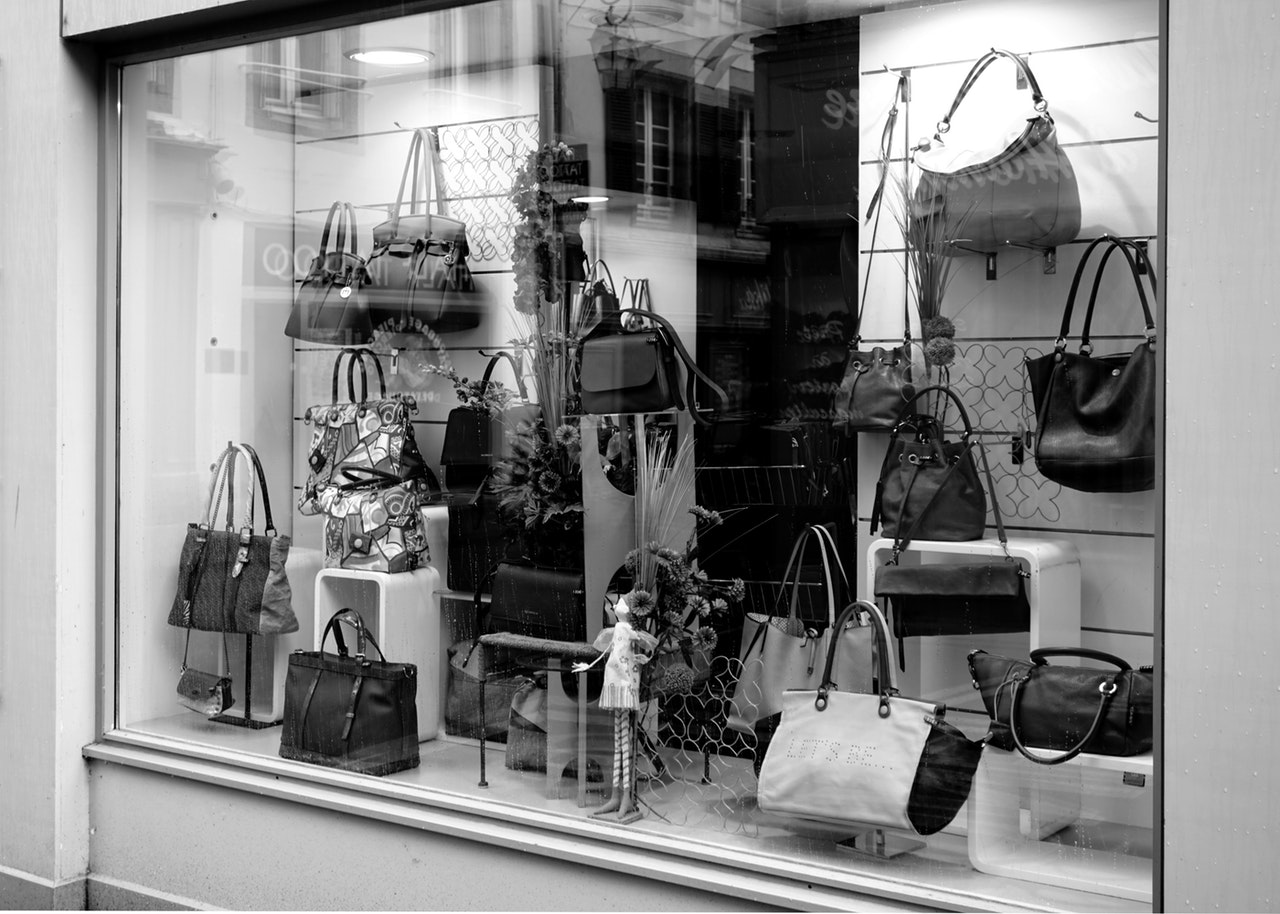Window displays are often the customers first point of visual contact with a store. This means that they are the first step of the retail experience. Window displays can be the difference between a customer coming into the store, or not. In fact, research shows that displays can increase sales by 540%, and hotspots can increase sales by 229%. This means that window displays are an incredibly effective marketing strategy and help to form part of businesses brands.
Types of Window Displays
The type of window display will depend on the store, their focus and approach. However, the main types are closed, semi closed, open, corner, elevated, island, and shadow box.
Open Window Display
In an open window display, you can see past the display and into the store. There’s not a back structure to block the view. Some stores can use this type of display very well, for example, Topshop.
Closed Window Display
A closed window display is the opposite, where the back of the display is blocked off. Some stores will use patterns, colour or design to add depth to a closed display. Mulberry’s AW17 display is a good example, as they used a grid structure and a deep green colour to highlight their featured ready to wear collection, which featured a check pattern.
Island Window Display
Island displays are typically found in a store’s flagship site, or in large department stores. They are used to fill space, while focusing on products or promotions. River Island have excellent examples of this in their flagship stores. They keep the display clean, and crisp, contrasting the colours of the products.
Semi Closed Window Display
A semi closed display has some of the structure of a closed window, as well as the inviting, glimpse in store that open windows give. The display has a partial screen that covers most, but not all the window. Apple do this well, framing their products with colour, or interactive elements, but still letting potential consumers to catch a glimpse of the inside of the store.
Corner Window Display
A corner window can be a tricky area to merchandize, which means that the display needs to be innovative to catch the customers attention. They can give a consumer continuity as the walk around the store, as each window display showcases the brand.
Elevated Window Display
An elevated window display tends to work well for jewellery and cosmetics. It’s used to feature products that will be eye-catching. They’re combined with a graphic display, or careful product placement and arrangement. They work well for small items, with lighting from below, and messaging above.
Shadowbox Window Display
A shadowbox display is most often seen in specialist stores, like jewellery and accessory stores. They’re designed to draw attention to small delicate items. A great example is from Louis Vuitton, and their geometric shadow box display for a jewellery collection, using rich colours, and carefully concealed lighting.

